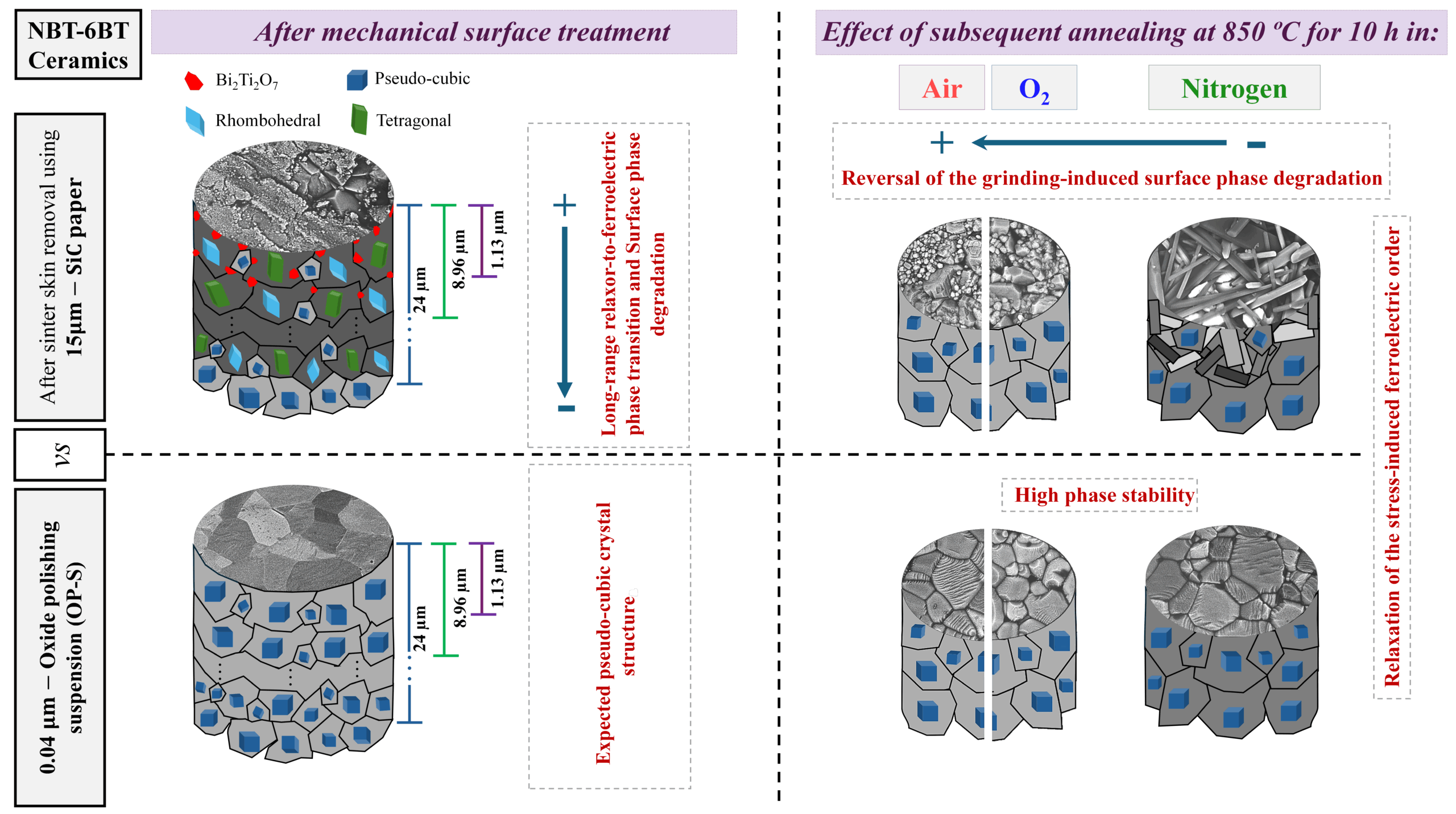
[Image above] Snapshots from a uniaxial compression test of a millimeter-long twisted-layer bulk boron nitride ceramic. Thin nickel marks are evaporated onto the specimen surface, serving as strain markers. Credit: Wu et al., Nature (CC BY 4.0)
As reported in the cover story of the June/July 2023 Bulletin, recent years have seen significant growth in the field of dislocation-tuned properties of ceramics.
Dislocations are one-dimensional line defects that are the main carriers of plastic deformation in crystalline solids. While dislocation-mediated plastic deformation is best known in metallic materials, researchers can engineer dislocations to achieve plastic deformation in ceramics, a traditionally brittle material, as well.
Most research on room-temperature plastic deformation in ceramics has focused on oxides, alkali halides, and zinc sulfide due to their bonding structure. These materials feature mainly ionic or polar covalent bonds between their constituent atoms. In other words, electrons are not equally distributed among the different atoms, which is beneficial for dislocation engineering.
In contrast, nonoxide ceramics, namely the nitrides, borides, and carbides, typically contain strong covalent bonds, i.e., electrons are equally distributed among the different atoms. This bonding structure makes plastic deformation more difficult to achieve.
Some breakthroughs on plastic deformation in nonoxide ceramics have been reported, however. For example, in 2015, researchers in Japan and the United States successfully induced a brittle-to-ductile transition in micropillars of single-crystal aluminum nitride. In 2022, researchers in China achieved plastic deformation through bond switching in nanopillars of silicon nitride.
These successes, though, are limited to samples on the micro and nanoscale. Achieving similar room-temperature deformability in bulk nonoxide ceramics “remains a formidable challenge,” researchers write in a recent open-access paper.
The researchers come from Yanshan University in China. In their paper, they explain that recently some groups, such as here and here, suggested that van der Waals materials may be a solution to achieving room-temperature plastic deformation in bulk nonoxide ceramics.
Van der Waals materials have layered crystal structures with strong in-plane covalent bonding but weak interlayer interactions. This structure allows for interlayer gliding and intralayer flexibility.
Researchers have taken advantage of this structure to create van der Waals materials with slightly misaligned layers rotated about the stacking direction. These twisted layers break the inherent symmetry of the crystal structure and often cause unique changes in physical properties.
For example, researchers from Massachusetts Institute of Technology and National Institute for Materials Science in Japan published several papers here, here, and here showing how multilayer graphene containing twisted layers exhibited superconductivity. Similarly, researchers at the University of Manchester observed ferroelectric-like domains at the interface between two marginally twisted hexagonal boron nitride thin crystals.
In the recent paper, the Yanshan University researchers note that twisted layers may affect a van der Waals material’s mechanical as well as electrical properties. Specifically, “introducing twisted stacking may increase interlayer spacing, which would reduce Es [slipping energy], thereby increasing the deformability factor,” they write.
To test this hypothesis, they synthesized a twisted-layer bulk ceramic from onion-like boron nitride nanoparticles using conventional spark plasma sintering. The ceramic consisted of 3D interlocked boron nitride nanoplates whose layers formed a laminated structure with various twisting angles.

a–c) Gradually enlarged images from high-angle annular dark-field scanning transmission electron microscopy. Bands with different contrasts in the nanoplate correspond to laminated nanoslices with different in-plane orientations. Credit: Wu et al., Nature (CC BY 4.0)
Room-temperature uniaxial compression tests demonstrated the exceptional mechanical properties of the twisted-layer bulk ceramic. It exhibited a high engineering strain up to 14% before fracture, which is almost one order of magnitude greater than other typical engineering ceramics (around 1%). Plus, its compressive strength reached 626 MPa, which is five to ten times that of other commercial hexagonal boron nitride ceramics.
Single cyclic compression test of the millimeter-long twisted-layer bulk ceramic. Credit: Wu et al., Nature (CC BY 4.0)
These exceptional mechanical properties were achieved with the sample sintered at 1,600°C for 5 minutes; prolonged sintering time and higher sintering temperature led to a decrease in both deformability and compressive strength. The researchers attribute this decrease in performance to the boron nitride nanoparticles transforming from the onion-like phase into the hexagonal phase.
The researchers successfully reproduced the twisted-layer bulk ceramics using hot pressing sintering under conditions similar to the spark plasma sintering process. This synthesis route will allow the materials to be more easily scaled up for practical applications, according to the researchers.
The researchers expect they can further improve the toughness and strength of the twisted-layer bulk ceramic by adding carbon nanofibers or nanotubes, as well as by adding a second ceramic phase.
Additionally, “The structural architecture strategy demonstrated in this study also sheds light on the development of other layered [van der Waals] engineering ceramics with simultaneously enhanced room-temperature deformability, strength, toughness and energy absorption,” they conclude.

Comparison of uniaxial deformability and strength of the twisted-layer bulk ceramic with those of traditional ceramics. Inset compares plastic deformability and strength of various ceramics. Credit: Wu et al., Nature (CC BY 4.0)
The open-access paper, published in Nature, is “Twisted-layer boron nitride ceramic with high deformability and strength” (DOI: 10.1038/s41586-024-07036-5).
Author
Lisa McDonald
CTT Categories
- Basic Science
- Material Innovations


